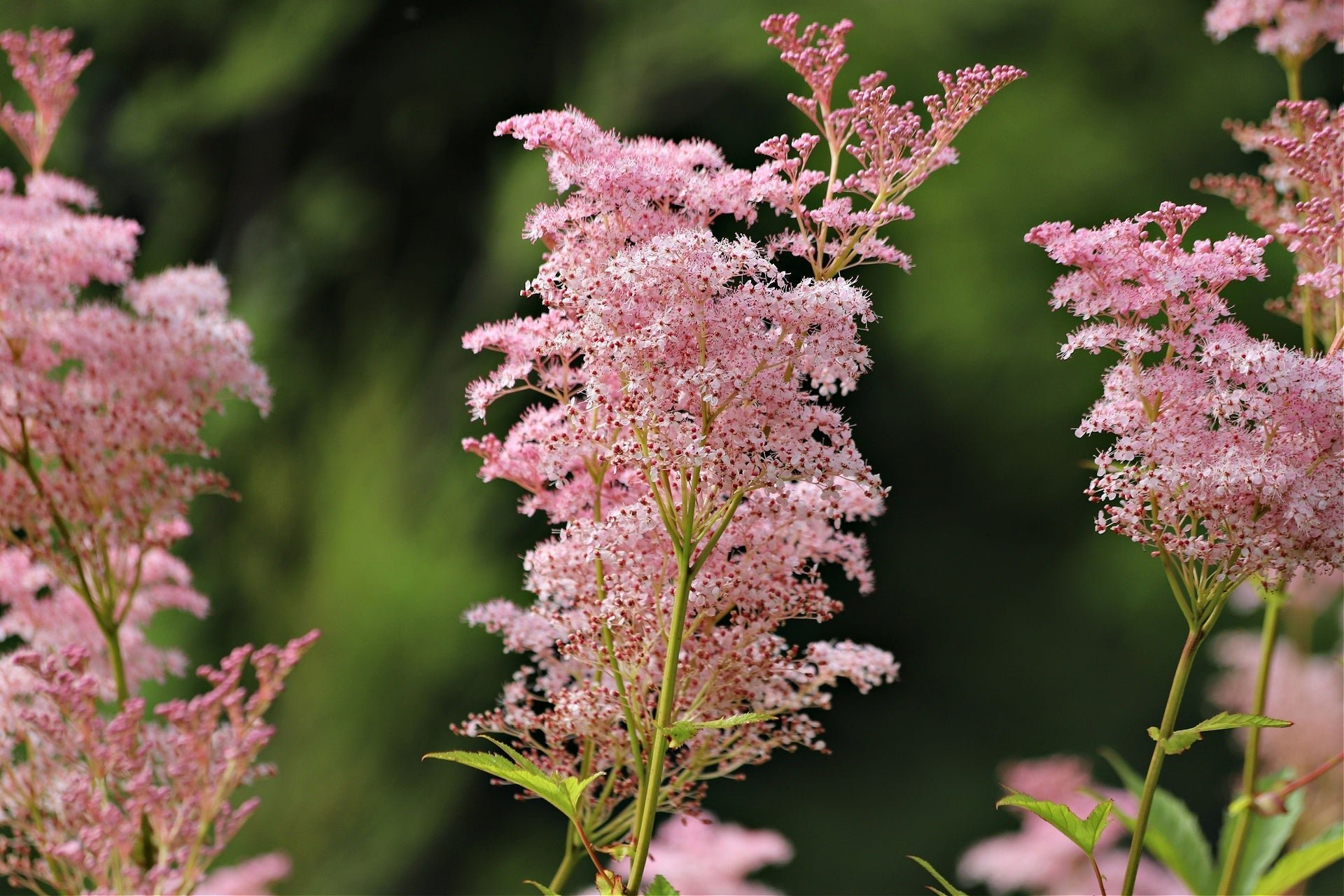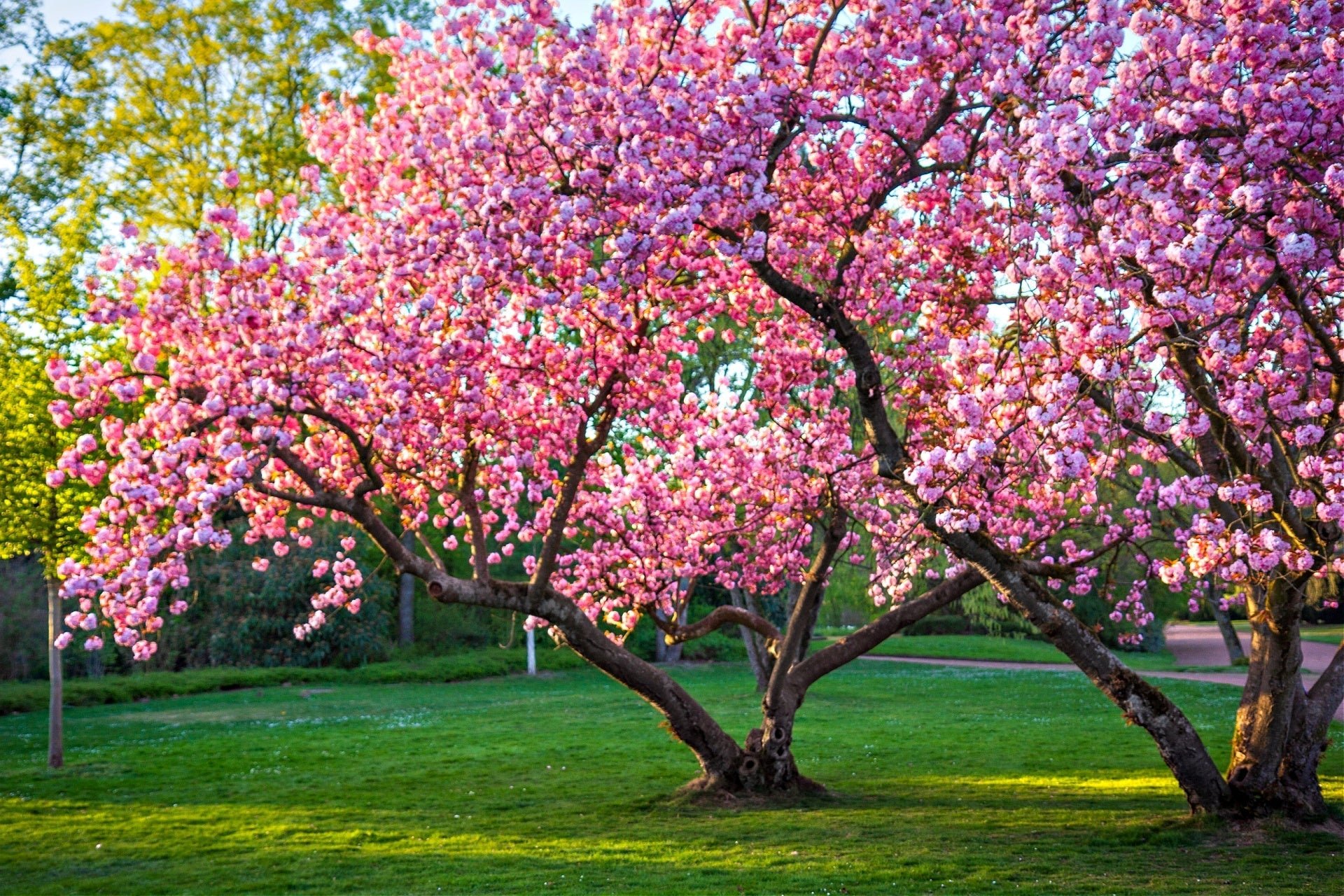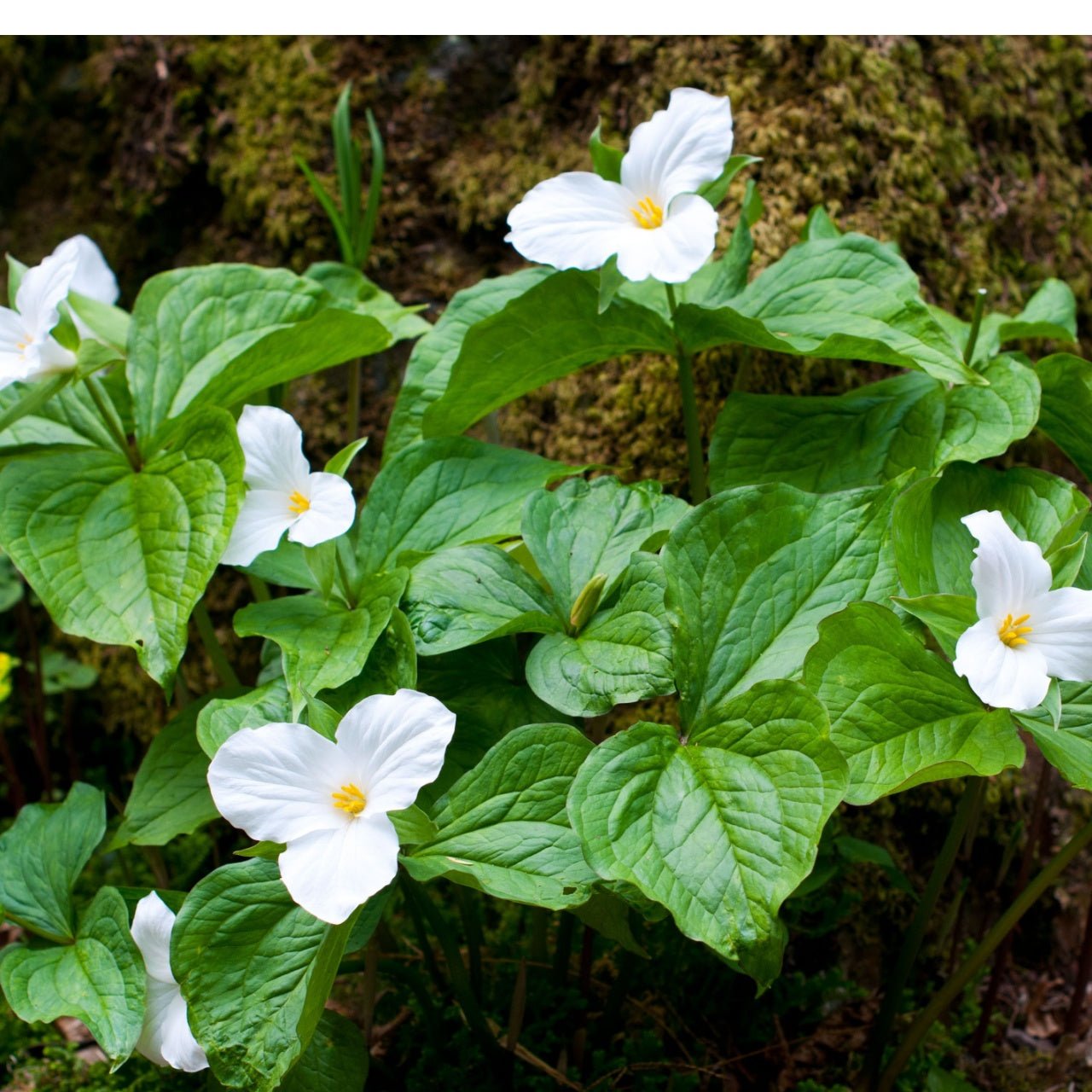White flowers are ethereal, delicate, and peaceful. Light flowers like bright stars against a sea of green foliage, glow in the moonlight, lighten up shady areas in the garden, and are a natural complement to any garden plant palette. Did you know those elegant white flowers could have a noble purpose as well? Choosing native plants with white flowers means that you can nourish pollinators and support local wildlife while adding beauty and interest to your yard or garden all year round. Native white blooms come in all shapes and sizes, from small woodland species to larger wildflowers, and are a sustainable choice for native gardeners in every US state.
But how can white native flowers do more than just look pretty in your yard? Keep reading to find out how white flowers can do more than just look stunning in your garden, and how to make the most of these beautiful blooms in your landscape design.
White Flowers and Pollinators: Making Your Garden Glow
Native plant species are those that have evolved in a specific area over thousands of years. As such, native plants usually have natural relationships with the other wildlife that live in an area, including pollinators. Moths, bees, and butterflies are all attracted to light-colored flowers in shades of white, yellow, and cream, and white-petaled flowers that can glow at night are especially attractive to nocturnal pollinators. White native plants are great for “moon gardens” and will support a wide variety of hawk moths, owlet moths, and native bees in your garden.
White Turtlehead (Chelone glabra) is a native plant with white flowers that is excellent for attracting pollinators. Turtleheads are native wildflowers and wetland plants that bloom in late summer, making them an excellent source of late-season nectar for native bees and other pollinators. Turtlehead is also a host plant for the Baltimore Checkerspot butterfly, and its tubular white blooms are a favorite of native bumblebees with long tongues.
Wild Quinine (Parthenium integrifolium) is another pollinator favorite, with crisp white, ferny flowers that resemble Queen Anne’s lace but are hardier and better for native bees. Native white pollinator attractors are a beautiful addition to your garden, so whichever species you choose, it is always a great idea to add some structural elements like ornamental grasses and colorful perennials nearby to create depth and beautiful focal points.
Striking White: Native Plants that Anchor a Garden Design
White is also an excellent contrast color or visual anchor in a native garden, especially when it breaks up a palette of similar colors. As a neutral color that makes surrounding colors appear brighter by comparison, white blooms can also draw the eye when you use them as accents among other native plants and grasses.
Goat’s Beard (Aruncus dioicus) is a feathery, native woodland plant with airy white flowers that add graceful structure and textural interest to part-shade gardens. Goat’s Beard blooms in early to mid-summer and does well in moist soils and other garden conditions. The creamy white flowers will glow in woodland edges and other shady spots in your native garden.

Another graceful white native plant for wilder woodland gardens is White Trillium (Trillium grandiflorum). A perennial native to eastern North America, this indicator species is a sign of healthy woodland ecosystems. This species can take a long time to reach blooming age if you start from seed, but these three-petaled white flowers are well worth the wait, and a reliable early spring favorite once they are established.
White woodland natives like Goat’s Beard and White Trillium are a beautiful and easy way to add seasonality and height to a naturalized or shady area in your yard.
Wildlife-Friendly White: The Bigger Ecosystem Picture
Native plants are an important ecosystem anchor, often with benefits that go beyond beauty and form. For instance, Elderberry (Sambucus canadensis) produces large flat-topped clusters of small white flowers in the early summer, as well as delicious dark berries that birds and small mammals adore. Elderberry also has cover and erosion control properties and is great if you are looking for a shrub to plant on slopes or along stream banks.
Many white native plants, like Yarrow (Achillea millefolium), are available in white or very pale pastels and are more than just a pretty face. Yarrow has long-lasting blooms, attracts pollinators, and is extremely deer-resistant. This hardy native perennial is also useful in natural landscaping for dry slopes, cottage gardens, and meadow plantings.
Native species are also an important part of the delicate ecosystem balance, unlike many exotic ornamentals. According to the U.S. Forest Service, preserving native plant species also helps to support the wider biodiversity and long-term health of native ecosystems.
Best White Native Flowers for Your Garden
If you want to start using white-flowering native plants in your garden, you have many options at TN Nursery to choose from. Here are two to try now:
1. White Trillium
This shade-loving spring bloomer is a perennial favorite for native plant enthusiasts and woodland gardeners. White Trillium is native to shady woodland habitats and does well beneath deciduous trees or in a naturalistic border. The large, snow-white flowers sit atop long elegant green stems and are a sure sign of a healthy native understory.

2. Yarrow Plant (White)
Looking for a hardy native perennial that will give you a long-lasting bloom season? Yarrow is a wonderful option for many locations, from cottage gardens to dry slopes, meadow plantings, and herbal or natural landscaping projects. Yarrow white flowers also attract pollinators and are extremely resistant to deer browsing.

Designing a White Natives Border
If you are planning to design a native plant border with white flowers, here are some things to keep in mind:
Choose plants with height and structure for a backbone. Tall native plants like Goat’s Beard are an excellent choice for the base of your white natives border.
Fill in layers with mid-height and low-growing natives. Layer in Wild Quinine or Turtlehead and then fill in with low-growing and early bloomers like Yarrow or Dutchman’s Breeches (Dicentra cucullaria).
Highlight night-scented species to make a moon garden. Moon gardens are a charming use of white flowers and native plants that open at dusk. Evening Primrose (Oenothera biennis) is a great pollinator-supporting plant that blooms late in the evening and throughout the night.
White-flowering native shrubs? Don’t forget them! Shrubs like Virginia Sweetspire (Itea virginica) have lovely cascading blooms that are also fragrant and light up rain gardens beautifully. Sweetspire is also flood and waterlogging tolerant, so it is an excellent shrub for more “naturalized” areas that have had trouble growing wet spots in the past.
Native White Flower Care Tips
Native plants are usually easier to preserve and more resilient than non-native species, but that doesn’t mean you can ignore their needs altogether. Here are a few white native plant care tips to keep in mind:
Pay attention to soil types. As discussed above, many natives have specific soil preferences. Humus-based woodland natives will struggle in rocky soils and vice versa, so make sure to match your species to your location.
Mulch with natural materials. Woodland natives will also appreciate mulch made from shredded leaves or bark, which will help retain moisture, suppress weeds, and mimic the natural forest duff.
Use fertilizer sparingly. Many native species do not need additional fertilizer or soil additives, and overfeeding can cause leggy, weak growth and fewer blooms than you might expect.
Give them time. As discussed above, some native plants (especially woodland natives) may take several seasons to become established before they reach full bloom.
White Natives Wrap Up
White-blooming native plants have many important uses beyond adding beauty and elegance to your garden. Restoring and supporting the native ecosystem and local wildlife food web is an important long-term goal for any eco-conscious gardener or outdoor enthusiast. Whether you want to create a moonlit bed, a white-themed native border, or a wildflower pollinator patch, including white native plants in your landscape design is one of the best ways to support a more biodiverse and balanced natural environment.
Native plants by TN Nursery are a healthy, wildlife-friendly, water-conserving option for any gardener or landscaper looking for new varieties. Check out our full native plant collection to find more white native plants to try in your yard.
Read more

Pink native flowers bring more than beauty and color to a landscape. They represent a choice—gardening with intention, and a desire to celebrate and promote native plant biodiversity. Whether you a...

Pink trees are magical. Planting a blooming tree in your yard is an invitation to spring. But if you also plant native trees that bloom with pink flowers, you invite wildlife and a restored environ...
Family Owned and run with pride
Nestled in the heart of Middle Tennessee, TN Nursery is a proud family-owned business rooted in tradition, quality, and a deep love for plants. For generations, we’ve been dedicated to providing exceptional service and building lasting personal connections with gardeners, landscapers, and nature enthusiasts across the country. Our mission is to make planting and gardening more accessible, enjoyable, and rewarding—whether you’re a seasoned horticulturist or just starting your first flower bed.
We specialize in expertly grown native plants, perennials, shrubs, trees, and ferns that thrive in a variety of climates. Every plant we offer is carefully nurtured on our farm to ensure strong root systems, healthy growth, and long-term success in your landscape. From vibrant evergreens to colorful blooms and ground covers, we offer an expansive selection to help you create the outdoor space of your dreams.
At TN Nursery, we believe in more than just selling plants—we’re here to help you transform your garden into a place of beauty, sustainability, and joy. Our knowledgeable team is always available to answer questions, offer guidance, and share tips to ensure your planting experience is a success. Join our growing family of happy customers and let us help you bring your garden vision to life.




